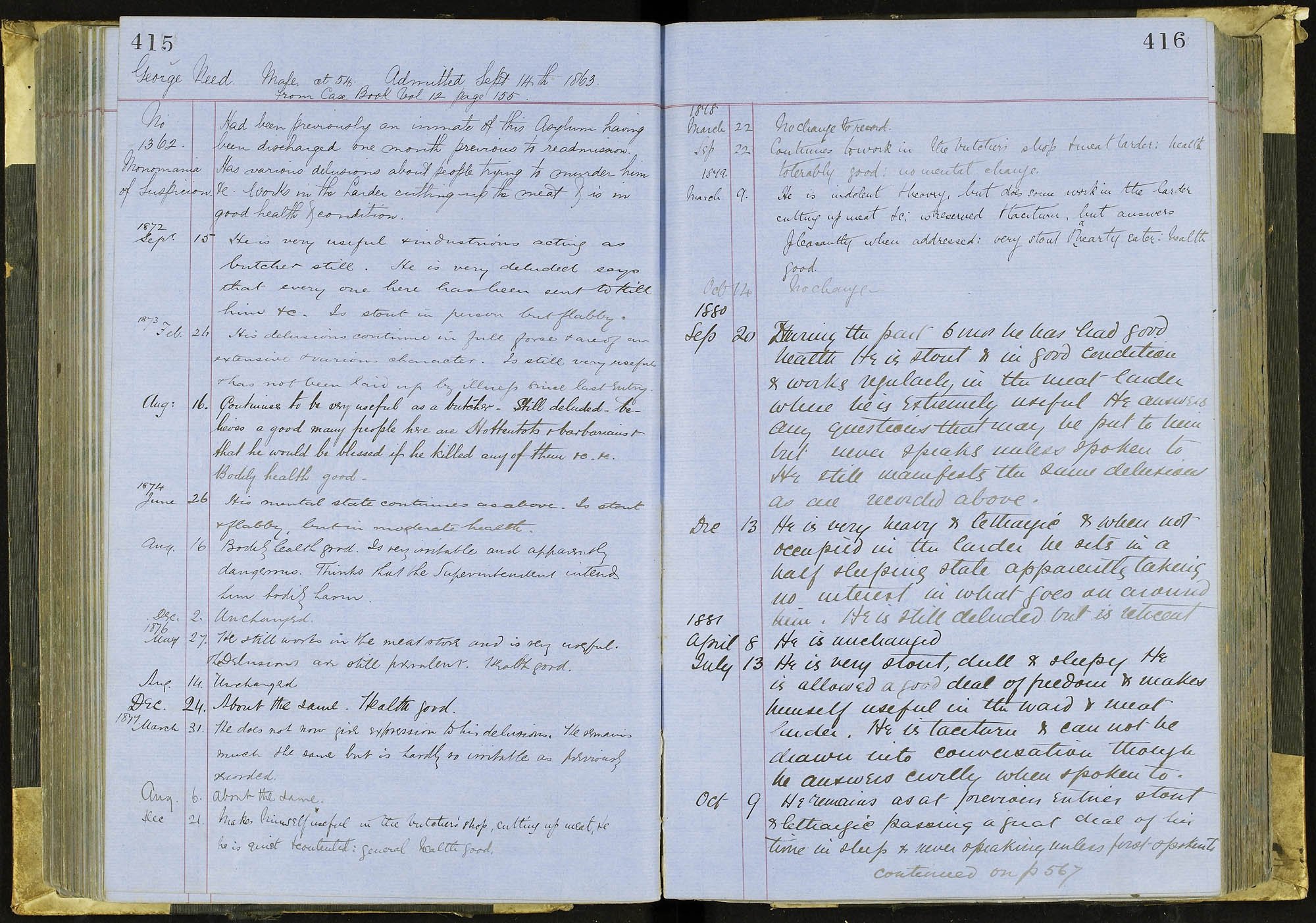OUTSIDE THE ASYLUM
Can you help George Marshall Medical Museum with a spot of family history research to find out about some people who were admitted to the Worcester City and County Lunatic Asylum in the 19th century?
Our aim is to share more patients’ stories, and to find out about their lives before admission and (where possible) after discharge.
george need
find out more about george need
George Need worked as a butcher and lodging house keeper in Malvern Link before becoming a long-term resident of the Asylum. He was first admitted in May 1860 with “mania chronic” and discharged in August 1863 as “cured” after a trial period of one month living outside the asylum. However, he could not cope with this and was admitted again later in the year, this time diagnosed with “monomania of suspicion”, which had made it impossible for him to lead a normal life. He stayed there more or less contentedly for over 20 years until his death in 1885 from natural causes.
Outside the Asylum
George was born about 1809. He worked as a butcher in Malvern Link, as is recorded in the trade directories covering the area. In 1844 he married Hannah Massey from Leigh, but the marriage did not prosper, perhaps due to his mental state. There is no record of them living together for any length of time, they had no children and they are in separate houses in the census of 1851. Hannah then worked as a cook in a large house, but by the 1861 census she had risen to become a lodging house keeper, presumably partially assisted by George at least until his admission into the Asylum in 1860. He spent most of the rest of his life in the Asylum, and Hannah continued as a successful lodging housekeeper. Upon Hannah’s death in 1877, their estate was sold by the Powick trustees to offset the cost of his upkeep in the Asylum.
George in Powick – 1860-1863
First admitted in May 1860 and diagnosed with “mania chronic”, his notes record that he is “incoherent in conversation”, does not recognise people, habitually called his friends by their wrong names and threatened to kill his wife. This had been going on for about 18 months before his admission. His initial treatment was “a warm bath with an anodyne draught at night, together with a tonic mixture”.
The next entry is in August 1860 and reports that he is “much improved in both in his manner and conversation, as also in his memory.” He was still taking a tonic with an occasional dose of laxative.
Nothing more is recorded until he is “Discharged Recovered” on 3 August 1863.
George in Powick again – 1863-1885
About one month after his discharge George brought himself back to Powick as it was the only place he felt safe. He said people wanted to poison him and that he had been left a large sum of money. He had been wandering around calling people liars and robbers, threatening suicide and threatening to harm others. Once admitted he was calmer and began to help in the bakehouse, although he still thought his food was poisoned and dosed himself with aloes as an antidote. After a time he became trusted sufficiently to be allowed to work cutting up meat and continued to work in the meat larder until his death in 1885.
Although his bodily health was generally good, his delusions never really left him. Sometimes he thought the staff wanted to harm him and at other times the staff themselves were also under threat from the same people who wished him harm. At times he thought he was a medical man, and once called himself James Johnson who was a master builder employing 120 men. Towards the end of his life he became more withdrawn and lethargic. He suffered a slight stroke in 1883, which he recovered from, and finally died of heart failure in December 1885.
To view George’s patient records, click here.
Go back to find out about more people who were patients at the asylum.
Research by Helen Rendell, 2024
